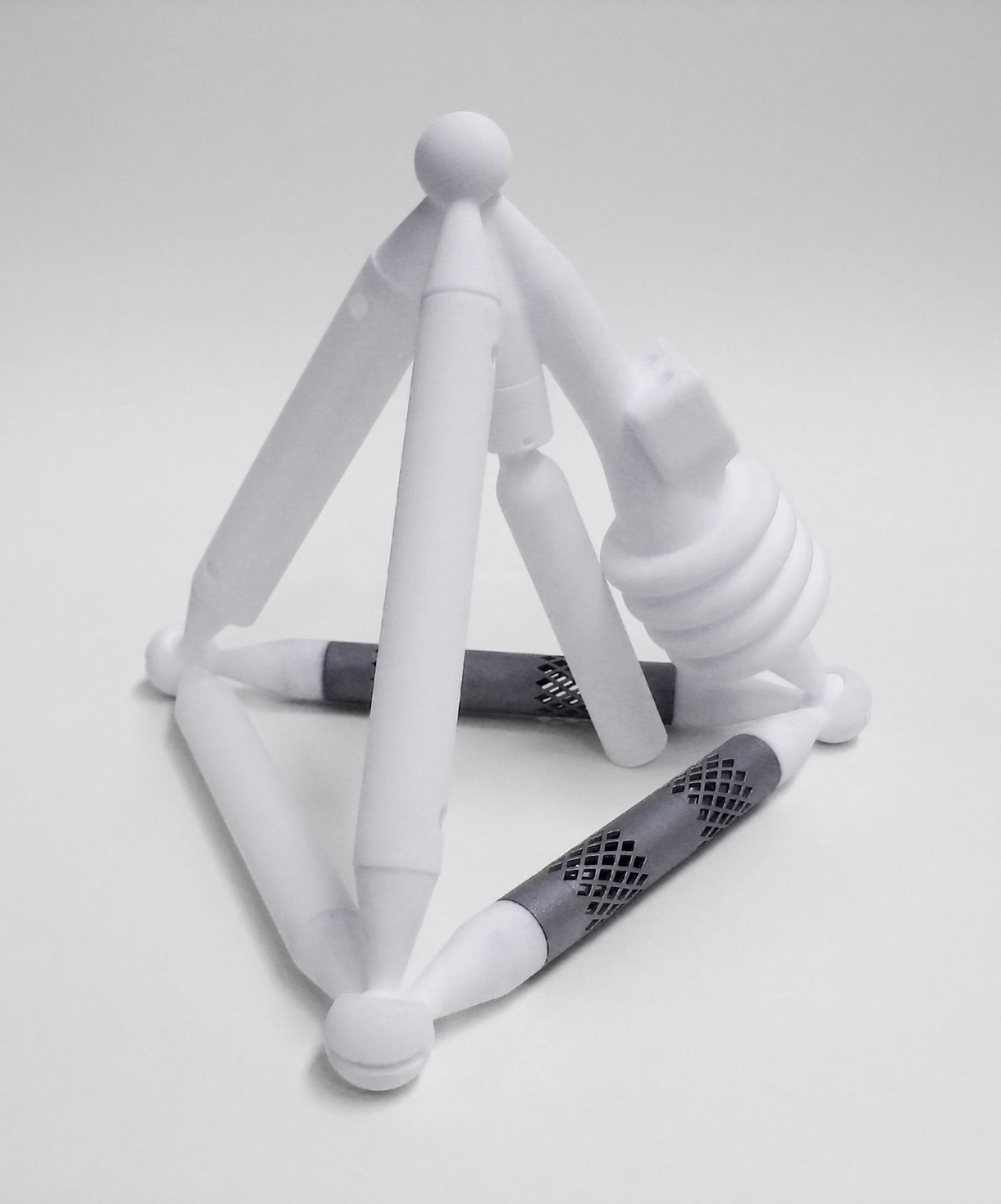Computer-generated robots
Genetic Robots are moving robots that can be created fully automatically. The robot structures are created using genetic software algorithms and additive manufacturing. At the Euromold trade fair in Frankfurt, Germany, researchers will be demonstrating these mobile machines from December 1-4 in Hall 11, Booth D66.

The important role robots play is not limited to industrial production in the automotive industry. They are also used for exploration, transportation and as service robots. Modeling the movements to make them mobile or enabling them to grip objects is a complex yet central challenge for engineers. With its “Genetic Robots”, the Fraunhofer Institute for Manufacturing Engineering and Automation (IPA) in Stuttgart has successfully had a moving robot automatically designed – without the intervention of a designing engineer – by a genetic software algorithm.
The robots consist of cylinder-shaped tubes with ball-and-socket joints that can assume different shapes depending on external factors and the purpose at hand. “The only input needed is: ‘Move forwards as efficiently as possible along a level surface,’” assures Dipl.-Des. Andreas Fischer, industrial designer and product developer at IPA. Fitness functions within the software algorithm select the movement elements with which the Genetic Robot can advance along this surface the software determines the shape of the tubes, the position of the movement points and the position of the drives (actuators).
The basis for the development is a physic engine in which the most important environmental influences – such as the friction of the ground or gravity – are implemented. If the Genetic Robot is to withstand unevenness, climb stairs or swim in water, these environmental conditions can be simulated. The result is not just one but a multitude of solutions from which the designer can choose the best one. “Another advantage is that the algorithm often spits out surprising variations – ‘mutations’ that would not necessarily have occurred to the designer,” Fischer explains. The Genetic Robots system can also be used to design subcomponents such as gripping systems for robots in industry.
Bionics provides the basis for the movements implemented. Natures ‘ideas’ are decrypted, and natural laws are applied to the field of technology. The resulting bionic structures are then manufactured using additive technologies. The original genetic algorithm was developed by US scientists Hod Lipson and Jordan Pollack and stems from their GOLEM Project. The software was further developed by i2p – ideas to products GmbH in Sankt Gallen, Switzerland, so that the robots’ geometries can be output directly as a CAD file for production by electronic tool machines. The mechatronics – the interplay of mechanics, electronics and computer science – along with the capability to move about by means of an additively manufactured bellows drive were created at IPA.
From December 1-4, 2010, at the Euromold trade fair in Frankfurt, Germany, IPA will be demonstrating a fully genetically generated robot structure capable of moving using the electronics attached to its legs and joints. Of particular interest are the ultralight structures that reduce the weight of the robot structure without affecting its stability.